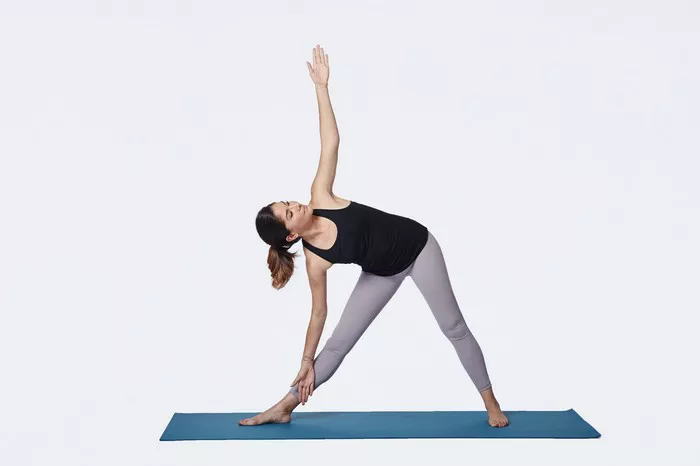Embarking on a yoga journey can be both invigorating and transformative, but determining the optimal frequency of practice is crucial for long-term success. In this article, we’ll delve into the intricacies of yoga frequency, considering various factors to help you establish a sustainable practice routine.
1. General Guidelines
When it comes to how often you should practice yoga, general recommendations hover around 2-3 times per week. This frequency strikes a balance between consistency and allowing your body adequate time to rest and recover. However, it’s essential to emphasize that these guidelines are not one-size-fits-all.
Importance of Listening to Your Body
One of the fundamental principles of yoga is tuning into your body’s signals. While adhering to recommended frequencies is beneficial, it’s equally crucial to listen to your body’s needs. Pay attention to how you feel during and after each session. If you experience excessive fatigue or soreness, it might be a sign to dial back the frequency or intensity of your practice.
Benefits of Consistency
Consistency is key to reaping the full benefits of yoga. Regular practice enhances flexibility, strength, and mental clarity over time. By committing to a consistent routine, you’re more likely to experience gradual progress and cultivate a deeper connection with your practice.
2. Factors Influencing Frequency
Experience Level
Beginners may find it beneficial to start with 1-2 sessions per week to acclimate their bodies and minds to the practice. Intermediate practitioners can aim for 2-3 sessions, while advanced yogis may thrive with 3 or more sessions, depending on their goals and physical capabilities.
Yoga Style
Different yoga styles require varying frequencies to achieve optimal results. Dynamic styles like Vinyasa may warrant more frequent practice to maintain fluidity and build cardiovascular endurance. In contrast, slower-paced practices such as Hatha or Yin yoga may be suitable for less frequent sessions, focusing on deep stretching and relaxation.
Personal Goals
Your individual goals play a significant role in determining how often you should practice yoga. If you’re primarily seeking stress relief and relaxation, incorporating yoga into your routine a few times a week can suffice. Those aiming for enhanced flexibility or strength may benefit from more frequent sessions to hone specific skills and target areas of improvement.
Time Constraints
In today’s fast-paced world, time constraints can pose a challenge to consistent yoga practice. However, even short, daily sessions can yield significant benefits. Consider integrating brief yoga sequences into your morning or evening routine, or explore online classes tailored to busy schedules. Remember, consistency trumps duration.
3. Potential Risks of Overdoing Yoga
Physical Injuries
While yoga boasts numerous health benefits, overdoing it can lead to physical injuries. Pushing your body beyond its limits or practicing incorrect alignment can result in muscle strain, joint pain, or even more severe injuries. It’s essential to strike a balance between challenging yourself and honoring your body’s boundaries to avoid setbacks.
Mental Burnout
In the pursuit of progress, it’s easy to succumb to the trap of overtraining and mental burnout. Yoga is not just a physical practice but also a mental and spiritual one. Taking rest days and incorporating other forms of self-care into your routine is crucial for maintaining overall well-being and preventing burnout.
4. Tips for Establishing a Sustainable Yoga Practice
Setting Realistic Goals
Start your yoga journey with realistic expectations and goals. Avoid the temptation to compare yourself to others and focus instead on your personal growth and progress. Celebrate small victories along the way and embrace the journey, knowing that consistency yields results over time.
Finding a Style You Enjoy
With a plethora of yoga styles to choose from, explore different practices until you find one that resonates with you. Whether it’s the dynamic flow of Vinyasa or the meditative stillness of Yin, finding a style you enjoy ensures that you’ll look forward to your practice and stay motivated to continue.
Creating a Routine
Integrate yoga into your daily or weekly schedule by carving out dedicated time for practice. Whether it’s first thing in the morning, during your lunch break, or before bed, establish a routine that works for you. Consistency is key, so prioritize your yoga practice as you would any other important commitment.
Listening to Your Body
Above all, listen to your body’s wisdom. Honor its signals of fatigue, pain, or discomfort, and adjust your practice accordingly. Avoid pushing through pain or forcing yourself into poses that don’t feel right. Remember that yoga is a journey of self-discovery and self-care, and your well-being should always come first.
Conclusion
In conclusion, the frequency of your yoga practice should align with your individual needs, goals, and lifestyle. By finding the right balance between consistency and self-care, you can establish a sustainable yoga practice that nourishes your body, mind, and spirit for years to come. Remember that yoga is a journey, not a destination, and it’s essential to approach it with patience, mindfulness, and a deep respect for your body’s wisdom. Whether you’re a beginner taking your first steps on the mat or an experienced practitioner seeking to deepen your practice, prioritize listening to your body, setting realistic goals, and finding joy in the journey. With dedication, self-awareness, and an open heart, your yoga practice can become a source of strength, balance, and serenity in your daily life.















